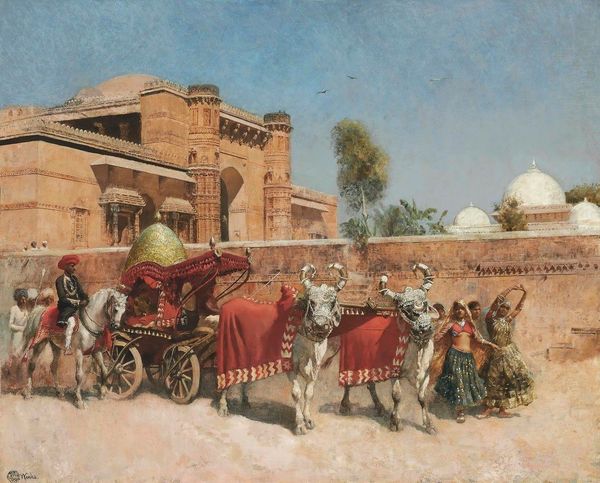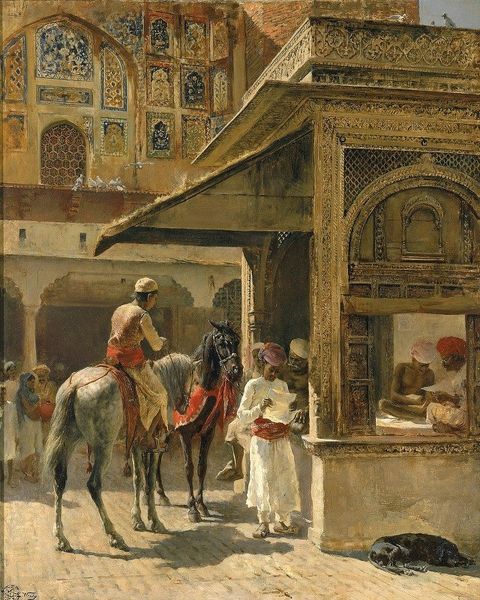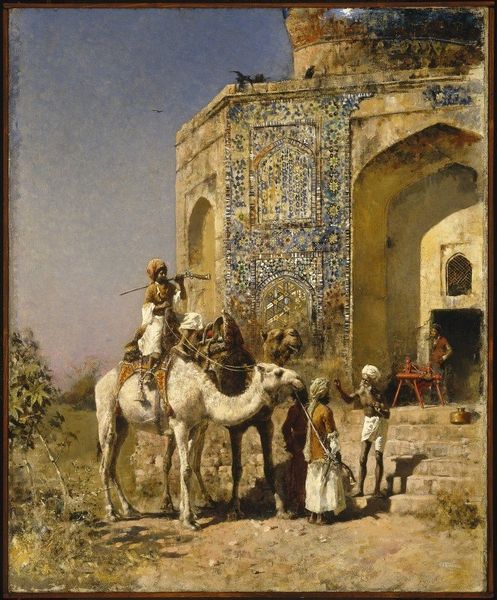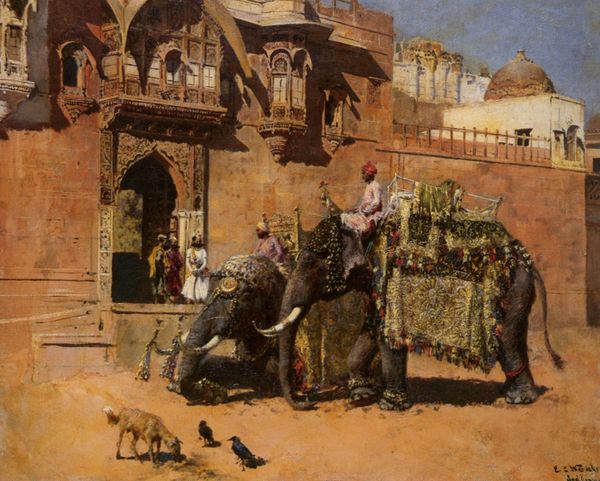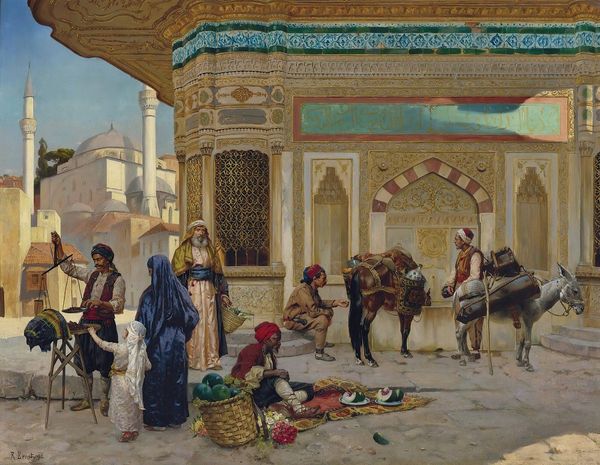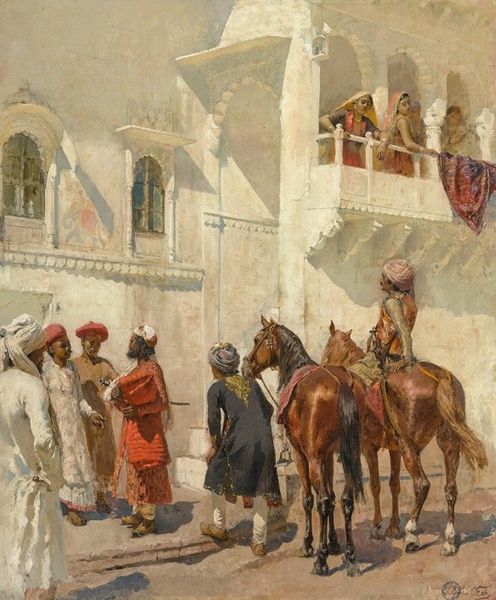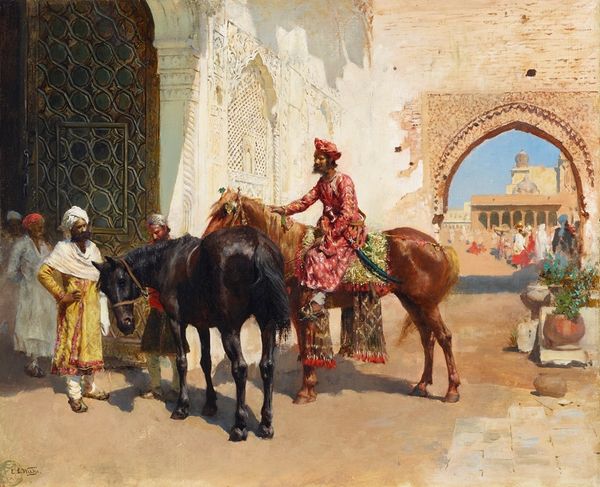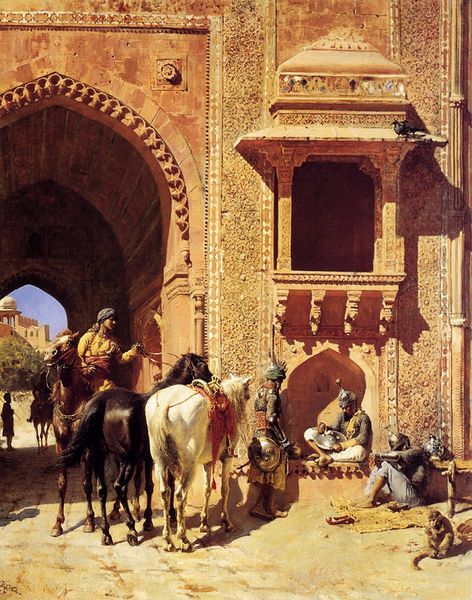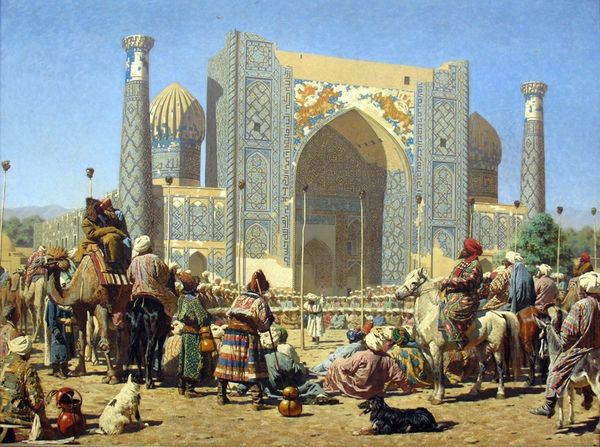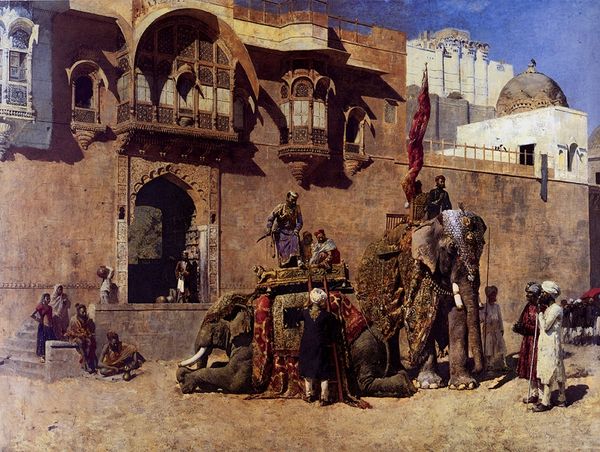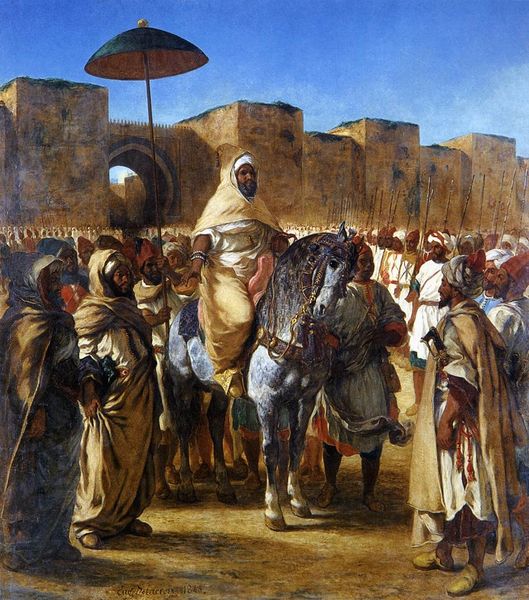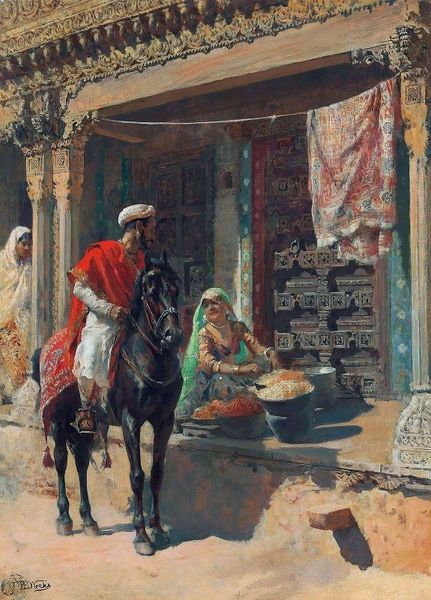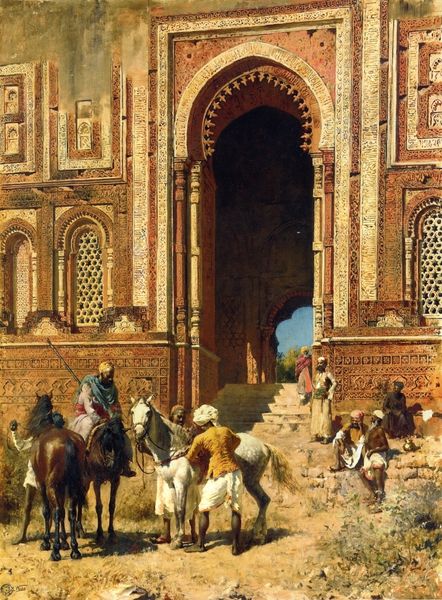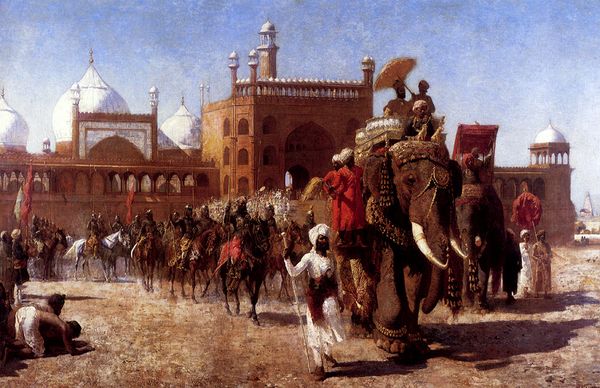
oil-paint
#
16_19th-century
#
oil-paint
#
landscape
#
oil painting
#
romanticism
#
orientalism
#
genre-painting
#
history-painting
Copyright: Public Domain: Artvee
Curator: Here we have Edwin Lord Weeks’ oil painting, "Departure For The Hunt." While it’s difficult to pin down the precise date, we can say with certainty that it originates from the 19th century. What are your initial thoughts on this composition? Editor: Opulent. It's just dripping with luxury. I’m immediately drawn to the contrast between the rough texture of the stone architecture and the incredibly detailed fabric on the elephants. The layering of different surfaces is really striking. Curator: That's a keen observation. Weeks was part of the Orientalist movement, and works like this fed the European fascination with the East, often portraying scenes of grandeur and exoticism. Think of how the artist uses light to heighten the drama of this spectacle. Editor: Absolutely. It makes you consider how something like this would have been created. The amount of labor— both artistic and physical—involved in something so elaborate, from the mining of pigments to the weaving of textiles... the making is deeply embedded in a context of class and imperial power. It isn't accidental. Curator: Precisely. Weeks was meticulous in his research, often travelling extensively to collect artifacts and sketches, ensuring a certain authenticity – or at least, his version of it – to cater to Western audiences eager for a taste of the "Orient." The question becomes, to what extent is this art ethnographic documentation versus romantic fantasy? Editor: Right. Because, beyond the beautiful detail, we're also seeing a crafted narrative of power relations. Those elephants decked out, the attendants… It speaks volumes about wealth and control in a very constructed way. We see an image of labor made invisible beneath luxury goods. Curator: Which puts "Departure For The Hunt" into conversation with similar historical paintings portraying specific cultural or class dynamics of power, like in representations of royal hunts. It served as a reminder to its European audiences of their place within this expanding world. Editor: Indeed, this isn't simply about aesthetic appreciation. We are actively analyzing the physical traces of power. By investigating the production processes, from pigment to patterned cloth, we can decode so much. Curator: So ultimately, what’s our takeaway here? Editor: Well, for me, it's about how an object can tell so many interwoven stories about culture, labor, and capital if we just remember to look closely. Curator: And for me, it’s thinking about how artworks participate in constructing grand narratives, even as seemingly innocent as a depiction of a hunt, shaping perceptions of cultures across borders and through time.
Comments
No comments
Be the first to comment and join the conversation on the ultimate creative platform.
